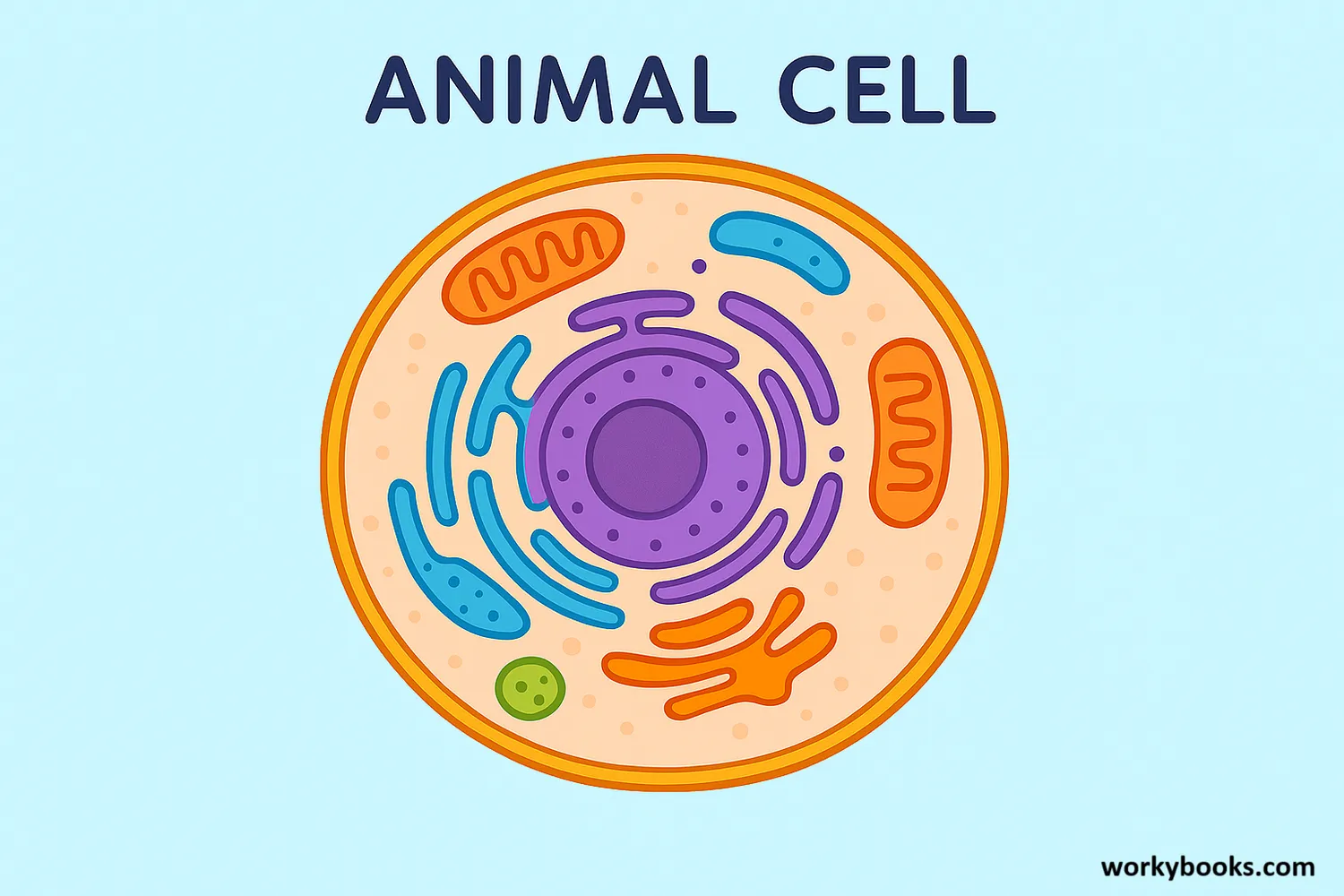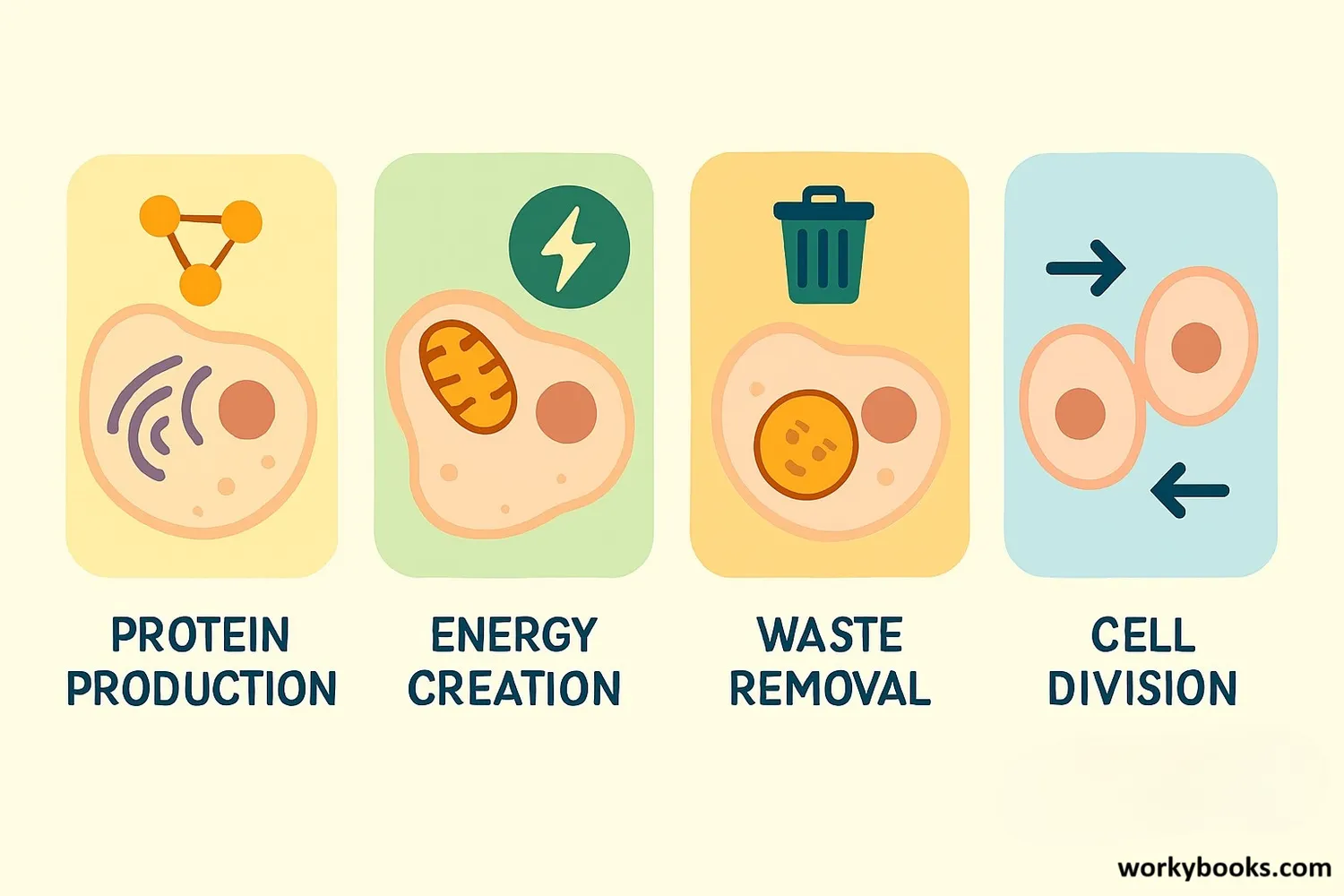Animal Cell - Definition, Examples, Quiz, FAQ, Trivia
Discover the amazing microscopic world inside every animal!
What is an Animal Cell?

Animal cells are the basic building blocks of all animals, including humans! They are eukaryotic cells, which means they have a nucleus and other specialized structures called organelles that each have important jobs.
Think of an animal cell as a tiny factory! Each part has a specific role that helps the cell function properly. Animal cells are different from plant cells because they don't have a cell wall or chloroplasts. Instead, they have a flexible cell membrane that allows them to move and change shape.
Did You Know?
Your body contains about 37 trillion cells! That's 37,000,000,000,000 tiny factories working together to keep you alive!
Microscopic Size
Most animal cells are 10-30 micrometers wide - about 10 times smaller than the width of a human hair!
No Cell Wall
Animal cells have only a flexible cell membrane, allowing movement and shape changes
Specialized Functions
Different types of animal cells perform specific jobs (muscle cells, nerve cells, blood cells)
Cell Organelles
Organelles are like tiny organs inside a cell. Each one has a special job that helps the cell function. Here are the main organelles in an animal cell:
Nucleus
The control center of the cell. It contains DNA and directs all cellular activities.
Mitochondria
Powerhouse of the cell! Converts food into energy (ATP) through cellular respiration.
Endoplasmic Reticulum
A network of membranes that transports materials through the cell. Rough ER has ribosomes; smooth ER makes lipids.
Golgi Apparatus
Packages and ships proteins to their destinations inside or outside the cell.
Lysosomes
The cell's recycling center! Breaks down waste materials and old cell parts.
Cytoplasm
Jelly-like substance that fills the cell and holds organelles in place.
Cell Membrane
The flexible outer layer that controls what enters and leaves the cell.
Ribosomes
Tiny structures that build proteins based on instructions from the nucleus.
Cellular Functions

Animal cells perform many important functions that keep living things alive:
Energy Production
Mitochondria convert nutrients into ATP energy through cellular respiration
Protein Synthesis
Ribosomes build proteins based on instructions from DNA in the nucleus
Cell Division
Cells reproduce through mitosis to create identical daughter cells
Amazing Cell Fact!
Your cells are constantly renewing! Your body makes about 300 million new cells every minute to replace old ones.
All these processes work together in perfect harmony to keep you alive and healthy. When you eat food, your digestive system breaks it down into nutrients that your cells use. When you breathe, your lungs bring oxygen to your cells. Your blood carries these materials to every cell in your body!
Cell Biology Quiz
Test your knowledge of animal cells with this fun quiz! Answer all 5 questions to see how much you've learned.
Frequently Asked Questions
Here are answers to some common questions about animal cells:
Fun Cell Trivia
Discover some amazing facts about animal cells!
Tiny Giants
If you lined up 10,000 human cells side by side, they would only be about 1 centimeter long! Yet each cell contains all the complex machinery to keep you alive.
DNA Unraveled
If you stretched out all the DNA in just one of your cells, it would be about 2 meters long! That means the DNA in all your cells would stretch to the sun and back over 60 times!
Power Producers
A single cell can contain anywhere from 100 to 5,000 mitochondria! Muscle cells have the most because they need lots of energy for movement.
Cell Lifespans
Different cells live for different lengths of time! Skin cells live about 2-3 weeks, while some nerve cells last your entire lifetime. Red blood cells live for about 4 months.


